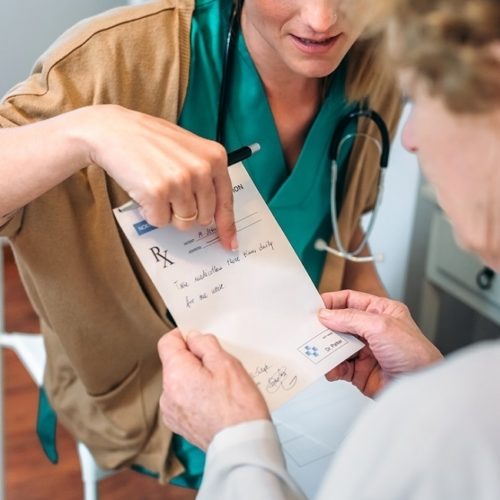
In a previous article, I talked about where a lot of the pharmacy jobs are and brought up the Aggregate Demand Index (ADI), which aims to measure demand in each individual state as well as the nation as a whole. It also aims to measure demand in multiple traditional settings, which I’ll discuss, as well as non-traditional settings you might not have thought of.
Barton currently hires pharmacists in all of these traditional settings and is adding new companies all the time so be sure to check in with them often if there is an area you are interested in! In addition, if you are interested in eventually getting into one of the non-traditional settings, experience in the traditional settings can be a tremendous asset.
Community Practice
Community pharmacy, as measured by the ADI, includes pharmacies within “independent, chain, supermarket, and mass merchandisers.” They traditionally have been some of the largest employers of pharmacists and still are: according to the Bureau of and Labor Statistics (BLS), “pharmacies and drug stores,” “general merchandise stores,” and “food and beverage stores” employ about 58% of all pharmacists, or 181,250 pharmacists. Community pharmacy practice traditionally just involved dispensing; in fact, it wasn’t until the 1990s that pharmacists were even liable for anything beyond putting the right drug in the right bottle. Just look at this paper from AJHP in 1993 that states “A pharmacist’s principal duties to the patient are to dispense the correct drug and to label it correctly.” Since then, however, pharmacist roles have rapidly expanded and community pharmacists are now providing OTC recommendations, medication therapy management services, chronic disease state services, immunizations including travel immunizations, screening for and dispensing combined oral contraceptives, blood pressure and cholesterol testing, and more recently even pharmacogenomics services. In fact, community pharmacy is evolving into more of an ambulatory care model, where pharmacists move further away from the product itself and into the realm of providing essential primary care services.
Currently demand in community pharmacy practice, according to the ADI, is 2.96 on a scale of 1 (demand is much less than pharmacist supply available) to 5 (high demand: difficult to fill open positions), indicating a roughly balanced market. Again, this does not paint the entire picture and jobs in more desirable areas to live can also be much harder to come by, balanced out by the high need in more rural or underserved areas.
Institutional Practice
According to the ADI institutional pharmacy is pharmacy “affiliated with hospitals and health systems.” It is the second-largest practice setting: according to the Department of Bureau of Labor and Statistics “hospitals: state, local, and private” employs 25% of all pharmacists, or 78,125 pharmacists.
Hospital pharmacists provide a lot of different dispensing and patient care services, including compounding IV’s (including antibiotics, total parenteral nutrition and chemotherapy), monitoring narrow therapeutic medications (medications where the difference between the helpful dose and harmful dose are very small), determining when patients can switch from taking medications through an IV to taking them orally, participating in Pharmacy and Therapeutics (or “P and T”) committees (committees that determine what medications are on the hospital’s formulary), and working to improve medication safety.
Management, Generalist, and Specialized
In addition to dividing the pharmacist market by community and institutional practice, the ADI divides practice settings into management, generalist, and specialized. Management would include not only pharmacy managers (those whose license is on record for the pharmacy locations), but also their supervisors – directors, vice presidents, and above. Some hospitals have even started employing Chief Pharmacy Officers, especially in response to rising drug prices.
Generalists are staff pharmacists – the front-line group that is responsible for making the vision a reality. They are the core of the healthcare system and we need excellent management to support those generalists as they create a better system for the benefit of all.
Specialized pharmacy areas are broad, but one way to get an idea of the types of specialties out there is to take a look at the ASHP-accredited residency program directory here. Pharmacy is becoming more and more specialized and specialty pharmacists work in cardiology, infectious disease, critical care, ambulatory care, oncology, pediatrics, and geriatrics, just to name a few. The Board of Pharmacy Specialties offers the most well-recognized specialty board certifications in pharmacy. As I mentioned in a previous article, “there are riches niches,” and specialized pharmacists have the highest demand all three categories. In the organizations I have worked in I definitely have seen that well-qualified candidates in specialties can be difficult positions to fill.
Non-Traditional Roles
Based on the BLS statistics, community and hospital practice makes up 83% of pharmacists. So where do the other 53,125 pharmacists work? That is actually a loaded question, and even the subject of entire blogs. It can include HEOR, medical writing, nuclear pharmacy, quality improvement, and more. I actually wrote a piece for MD’s on non-traditional physician roles and many of those jobs would also apply to pharmacists. As an incredible example, when I was in pharmacy school Wal-Mart visited our class to recruit; they actually talked about a pharmacist that started with them in the pharmacy department and then moved into purchasing. Eventually, they became a video game buyer for the entire company. The point is – the sky is the limit! If you can dream it, you can do it, and if you are willing to work hard on your goals, develop new job skills, and go after the right opportunities you can get there.

